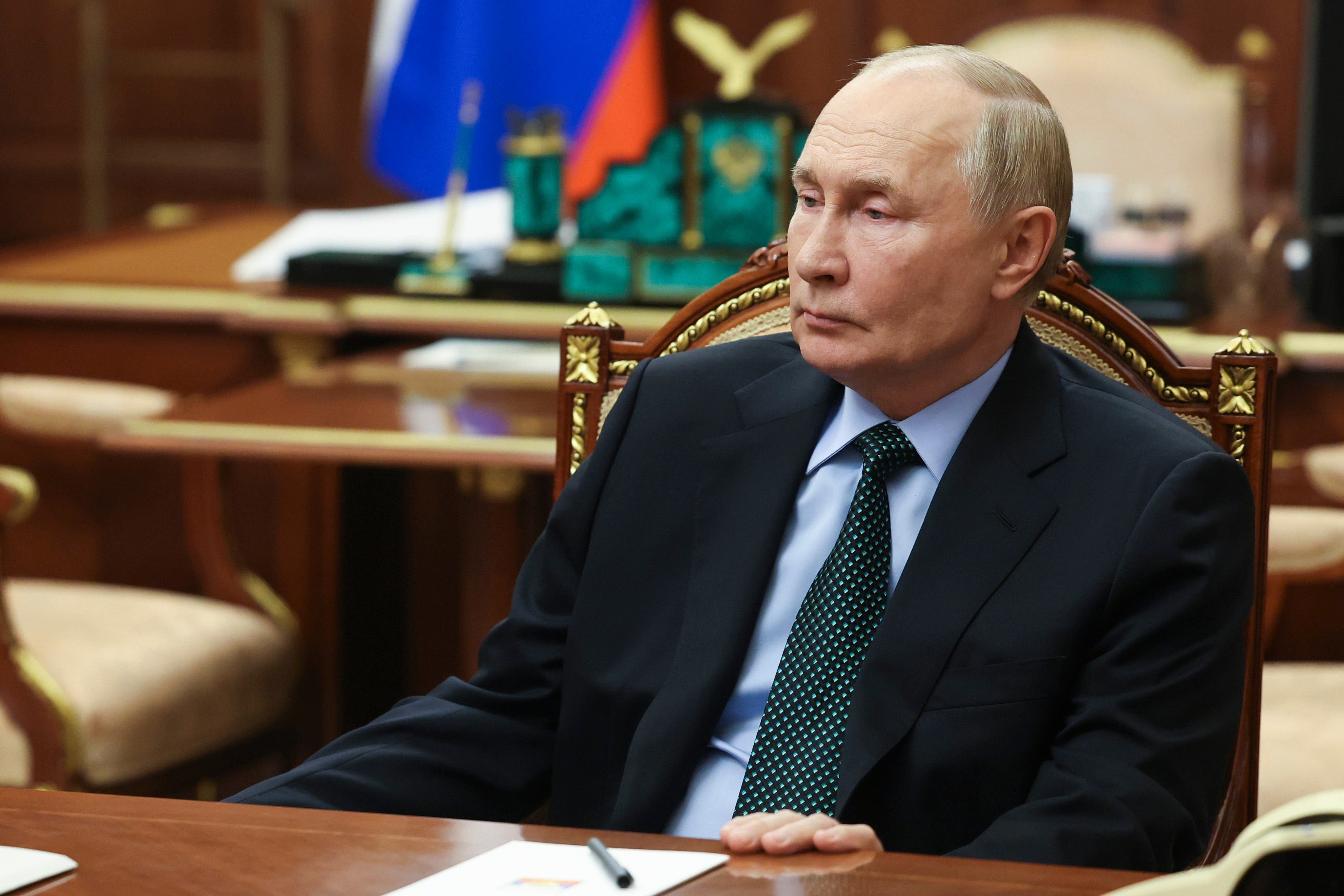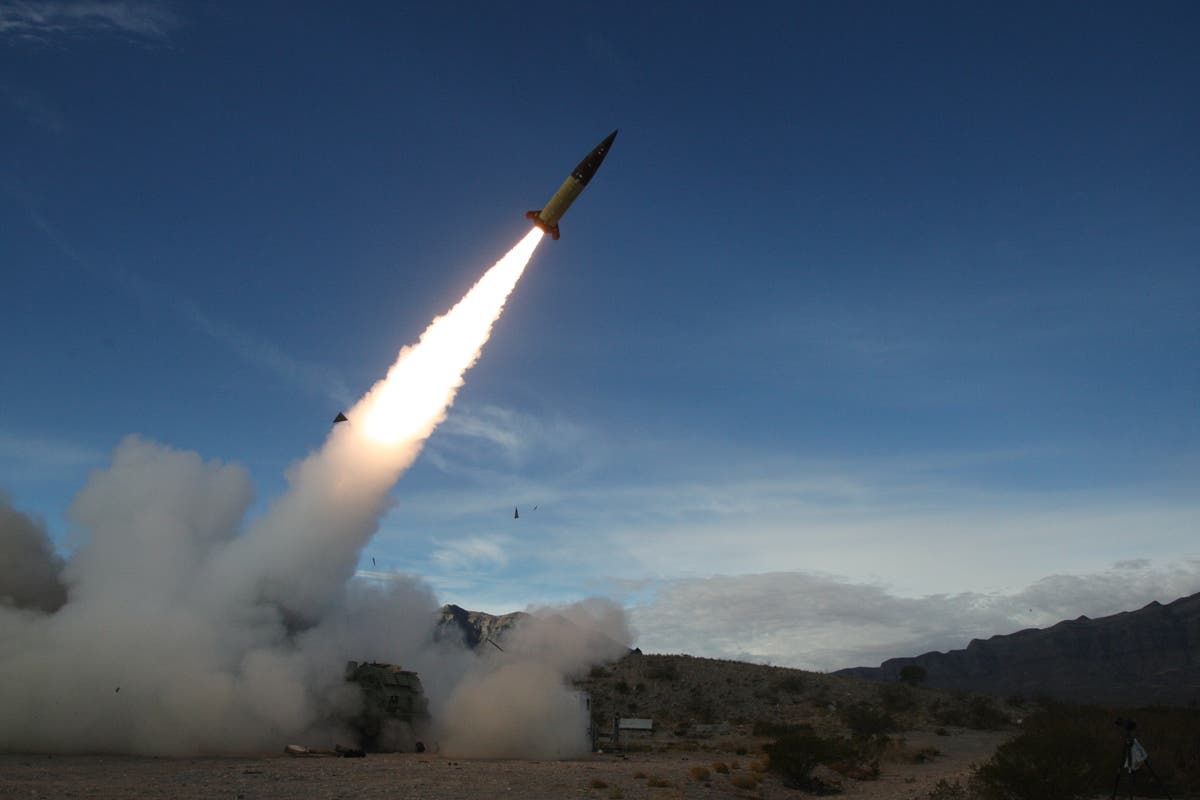Ukraine has fired US-supplied long-range missiles into Russia for the first time since Joe Biden lifted restrictions on their use – with Moscow warning that it would respond “accordingly” on a day where Vladimir Putin lowered the bar for the Kremlin to launch an attack using nuclear weapons.
Ukraine used the Army Tactical Missile System (ATACMS) in a strike on Russia’s Bryansk region, about 80 miles (130 kilometres) from the border.
Russia’s revised nuclear doctrine now declares a conventional attack on Russia by any nation supported by a nuclear power will be considered a joint attack on his country. The doctrine, which lays the conditions under which Russia’s leadership might consider a nuclear strike, also states that an attack using conventional missiles, drones or other kinds of aircraft could justify the response.
Downing Street condemned the change as the “latest example of irresponsibility” from the “depraved Russian government”.
Russia has been planning to update its nuclear doctrine for months, but the timing of Mr Putin’s signature on the changes signals a significant escalation in the war, coming in the wake of Mr Biden’s decision to allow Kyiv to conduct strikes inside Russia with the 190-mile range ATACMS.
Moscow said Ukraine had fired six ATACMS. US officials told American media the ATACMS had been used to hit an ammunition warehouse in Bryansk, which sits northwest of Kursk, the region on which a Ukrainian assault has been underway since the summer.
Ukraine’s military said it had struck a Russian arms depot in an attack that caused a number of secondary explosions. It did not publicly specify what weapons it had used but an affiliated Telegram channel posted a video that it said showed US-supplied ATACMS missiles being fired from an undisclosed location in Ukraine.
Russia’s defence ministry said its military shot down five ATACMS missiles and damaged one more. Fragments fell on the territory of an unspecified military facility, the ministry said. The falling debris sparked a fire but didn’t cause any damage or casualties, it said.
Speaking at the G20 summit in Brazil, Russia’s foreign minister Sergei Lavrov said: “That ATACMS was used repeatedly overnight … is of course a signal that they [the US] want escalation,” he said. “And without the Americans, use of these high-tech missiles, as Putin has said many times, is impossible.”

“We will be taking this as a renewed face of the Western war against Russia and we will react accordingly,” he told a press conference.
The missile launch took place as Ukraine marked 1,000 days of war, with battle-fatigued troops at the front, its cities besieged by airstrikes, a fifth of Ukrainian territory in Moscow’s hands and doubts about the future of Western support as Donald Trump heads back to the White House. US officials have expressed dismay at Russia’s deployment of North Korean troops to help it fight, particularly around Kursk, where around 50,000 Russian troops have massed.
Asked about his response to Russia ramping up the nuclear threat, prime minister Sir Keir Starmer said “the quickest way for this conflict to end is for Russia to cease”.
Britain has its own long-range Storm Shadow missiles, which Ukraine could use to strike inside Russia, but they typically rely on US technology for targeting. They have only been used to date on Russian-occupied territory in Ukraine. The authorisation to use them inside Russia is yet to come but Sir Keir said Britain would “ensure Ukraine has whatever is needed for as long as it’s needed to be put in the strongest possible position”.
“Russia is the aggressor in Ukraine and today is the day that marks 1,000 days of the conflict,” he added. “That is 1,000 days of Russian aggression, 1,000 days of Ukraine suffering from that aggression, and we’ve said throughout that we stand firmly with Ukraine.”
President Volodymyr Zelensky said Ukraine was working with all partners to win their support for longer-range strikes and he called out Germany in particular.
“I think after statements about nuclear weapons, it is also time for Germany to support corresponding decisions,” Mr Zelensky said during a briefing in Kyiv with Danish prime minister Mette Frederiksen.

German chancellor Olaf Scholz, who held an hour-long call with Mr Putin last week, has been hesitant to provide long-range Taurus cruise missiles to Ukraine.
Mr Zelensky earlier warned that North Korea could grow its deployment of troops in Russia from 11,000 to as many as 100,000.
He said a string of recent airstrikes were evidence that Mr Putin has no interest in ending the war. US president-elect Donald Trump has said he will look to end the war in 24 hours when he enters the White House. Despite the hyperbole, Kyiv is concerned it could be railroaded into an agreement that would force it to give up territory occupied by Russia, something Mr Zelensky has said he would not do.
A third Russian strike in three days hit a civilian residential area in Ukraine, killing at least 12 people, including a child, officials said on Tuesday. The strike by a Shahed drone in the northern Sumy region late on Monday hit the dormitory of an educational facility in the town of Hlukhiv and wounded 11 others, including two children, authorities said, adding that more people could be trapped under the rubble.
On Sunday, a Russian ballistic missile with cluster munitions struck a residential area of Sumy in northern Ukraine, killing 11 people and wounding 84 others. On Monday, a Russian missile barrage sparked apartment fires in the southern port of Odesa, killing at least 10 people and wounding 43.
“Each new attack by Russia only confirms Putin’s true intentions. He wants the war to continue. Talks about peace are not interesting to him. We must force Russia to a just peace by force,” Mr Zelensky said.
Separately, Germany and Finland said the damage to two undersea internet cables in the Baltic sea must be seen as an act of sabotage,
A pair of fibre-optic communications cables were severed on Sunday and Monday in an incident which “immediately raises suspicions of intentional damage”, the two nations said in a joint statement.
A 745-mile (1,200 kilometre) cable linking Helsinki to the German port of Rostock stopped working at 2am on Monday, according to Finnish state-controlled cyber security and telecoms company Cinia.












